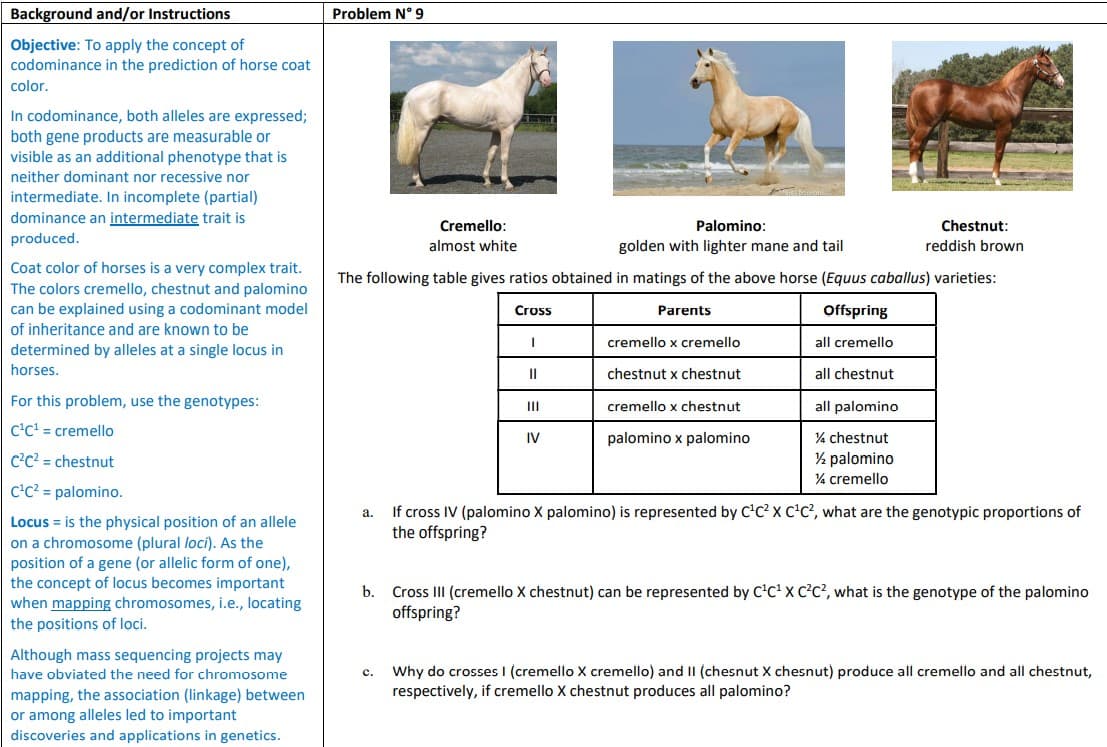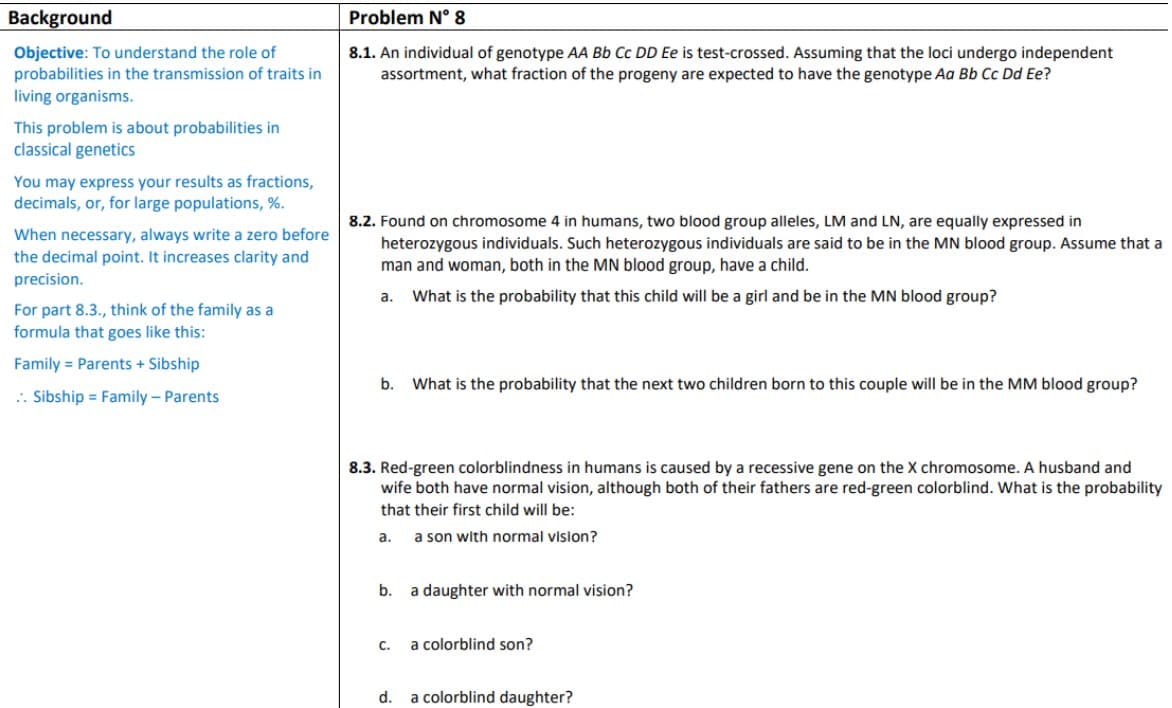Objective: To review the phases of mitosis with the understanding that in a real tissue or a non-synchronized cell culture, different mitotic phases and cells in interphase will be observed at a certain time. Interphase is the period between mitotic events; all other phases are part of mitosis and their individual probabilities add up to the total probability of seeing cells undergoing mitosis. Pay attention to the individual probabilities for cells in each phase of the cell cycle. Problem N° 10 For a certain type of animal tissue, the probability of a randomly selected cell being in a particular stage of the interphase/mitosis cycle is given by the following table: Stage Probability Interphase 0.5 Prophase 0.1 Metaphase 0.05 Anaphase 0.2 Telophase 0.15 Suppose you examine 100 cells at random from this tissue. A) How many cells do you expect to see in metaphase? _____ cells B) You have selected a high magnification (2000 X) in your microscope and you see only one cell at a time (50 µm in diameter). How frequently you would see a cell undergoing mitosis? _____ % C) What is the probability of seeing no metaphases in 100 cells? _____ %
Objective: To review the phases of mitosis with the understanding that in a real tissue or a non-synchronized cell culture, different mitotic phases and cells in interphase will be observed at a certain time.
Interphase is the period between mitotic events; all other phases are part of mitosis and their individual probabilities add up to the total probability of seeing cells undergoing mitosis.
Pay attention to the individual probabilities for cells in each phase of the cell cycle.
Problem N° 10
For a certain type of animal tissue, the probability of a randomly selected cell being in a particular stage of the interphase/mitosis cycle is given by the following table:
|
Stage |
Probability |
|
Interphase |
0.5 |
|
Prophase |
0.1 |
|
Metaphase |
0.05 |
|
Anaphase |
0.2 |
|
Telophase |
0.15 |
Suppose you examine 100 cells at random from this tissue.
- A) How many cells do you expect to see in metaphase? _____ cells
- B) You have selected a high magnification (2000 X) in your microscope and you see only one cell at a time (50 µm in diameter). How frequently you would see a cell undergoing mitosis? _____ %
- C) What is the probability of seeing no metaphases in 100 cells? _____ %


Trending now
This is a popular solution!
Step by step
Solved in 2 steps






